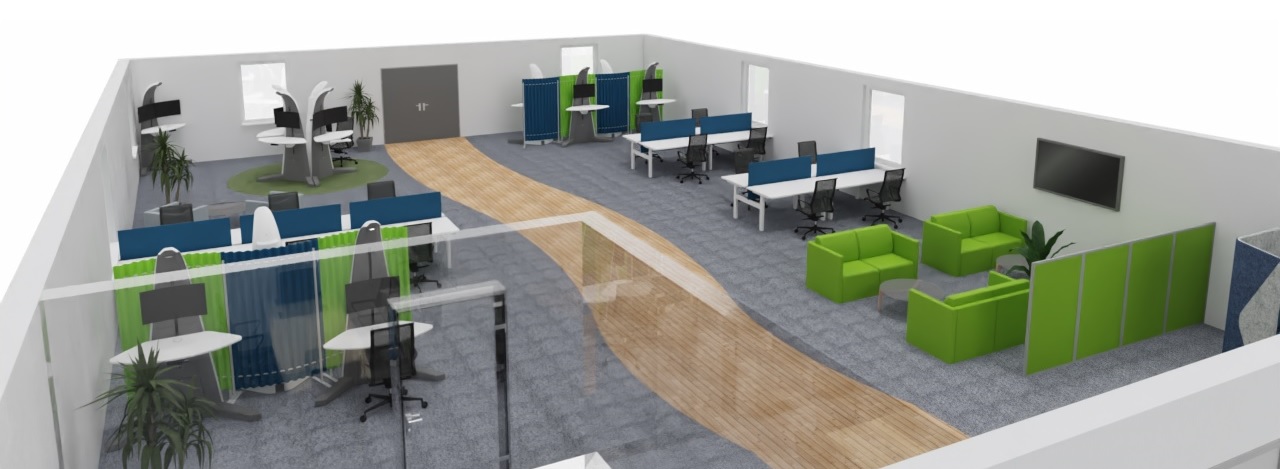Be the first to know
Please leave your contact details below to be informed of the launch.

Space-saving in office environments offers numerous benefits, contributing to efficiency, productivity, and overall well-being of employees. Here are some key advantages:
1. **Increased Productivity:** A well-organised and clutter-free workspace allows employees to focus on their tasks without distractions. With less physical clutter, there is less mental clutter, leading to increased productivity.
2. **Optimised Workflow:** Space-saving design often involves thoughtful planning of the layout and organization of office furniture and equipment. This can lead to a more streamlined workflow, as employees can move more easily between workstations and collaborate more efficiently.
3. **Flexibility and Adaptability:** Space-saving solutions often incorporate modular and flexible furniture and storage options. This adaptability allows the office layout to be easily reconfigured as needs change, accommodating growth or changes in work processes.
4. **Cost Savings:** Efficient use of space can result in cost savings. Smaller office spaces require less maintenance, heating, and cooling. Additionally, businesses may need to lease or purchase less square footage, leading to reduced real estate costs.
5. **Enhanced Collaboration:** A well-designed space encourages collaboration among employees. Open layouts, communal areas, and shared spaces can facilitate communication and teamwork, fostering a more collaborative work environment.
6. **Improved Employee Morale and Well-being:** A clutter-free and organised office space can contribute to a positive work environment. Employees tend to feel more comfortable and less stressed in well-designed spaces, which can positively impact morale and overall well-being.
7. **Better Utilisation of Technology:** Space-saving designs often incorporate modern technology to maximise efficiency. This includes smart storage solutions, digital collaboration tools, and ergonomic furniture that supports the use of computers and other devices.
8. **Environmental Impact:** Reducing the physical footprint of an office space can contribute to a smaller environmental impact. Smaller spaces generally require less energy for heating, cooling, and lighting, contributing to a more sustainable workplace.
9. **Adherence to Safety Standards:** Effective space planning ensures compliance with safety standards and regulations. Adequate space for emergency exits, clear pathways, and proper ergonomic design all contribute to a safer work environment.
10. **Attracting and Retaining Talent:** A thoughtfully designed and efficient workspace can be an attractive feature for potential employees. It can also contribute to employee satisfaction, which is essential for talent retention.
In summary, space-saving in office environments offers a range of benefits, from increased productivity and flexibility to cost savings and improved employee well-being. Adopting efficient space utilisation strategies can contribute to the overall success and sustainability of a business.
www.hellounio.com
